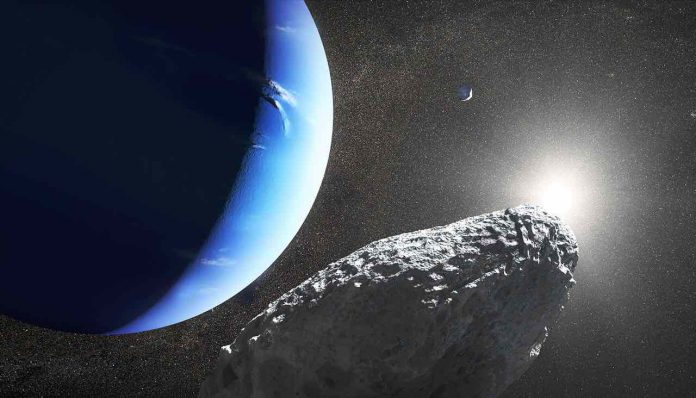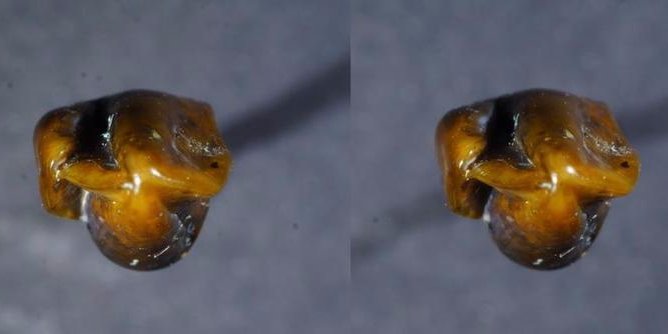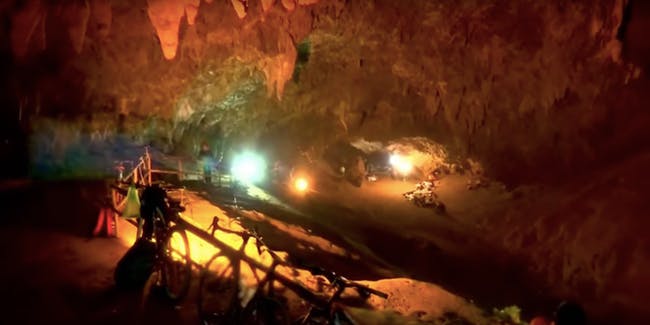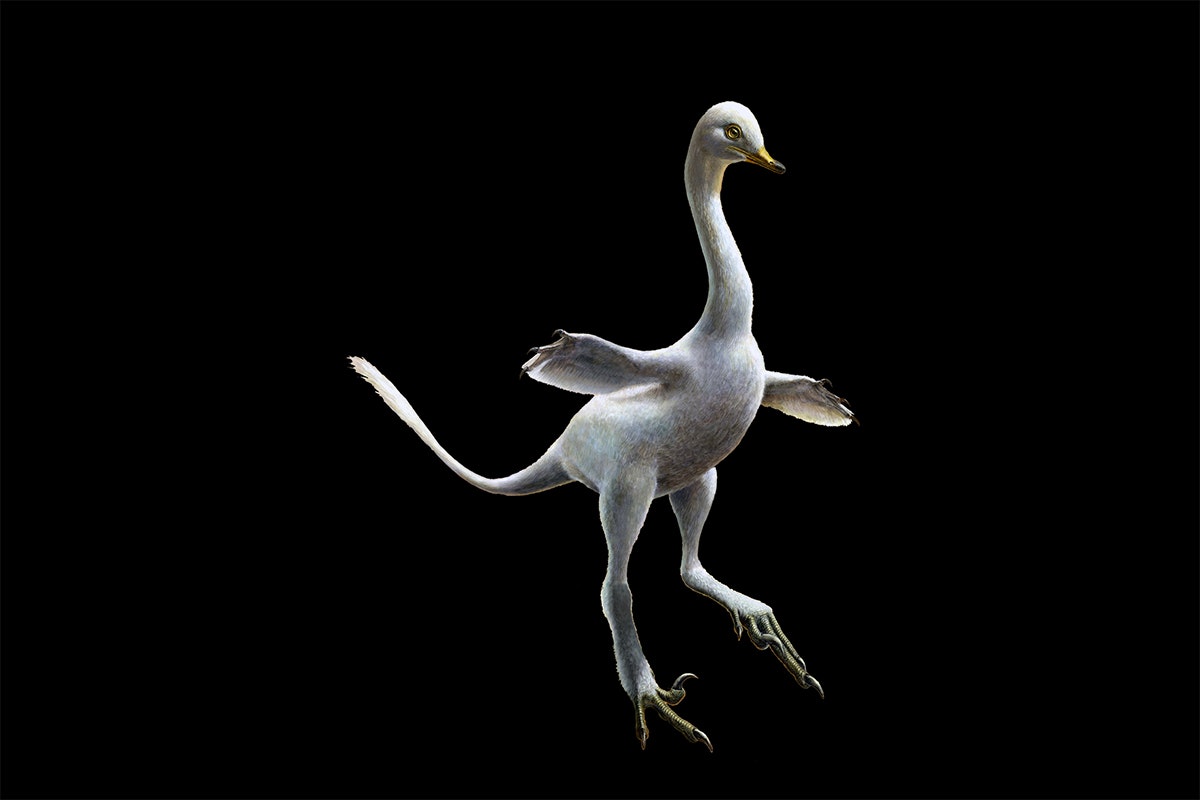A NEW moon as been discovered orbiting Neptune at break-neck speeds, fuelling demands for Nasa to send a mission to the mysterious planet.
Some 2.7 billion miles away from Earth, a small moon measuring just 21 miles across is zooming around Neptune – the outer most planet in the solar system. The Neptunian moon known as Hippocamp is by far the smallest in the solar system – with the Earth’s moon 2,159 miles wide. The tiny lunar satellite is also travelling at whopping speeds, orbiting Neptune at about 20,000 miles an hour, 10 times faster than our moon orbits.
However, as Neptune is almost four times the size of Earth, Hippocamp takes 22 hours to orbit the gas giant.
Mark Showalter, a senior research scientist at the Seti Institute, in Mountain View, California, said: “This is the smallest known moon around the farthest known planet in the solar system.”
Hippocamp, which is one of seven moons that orbit Neptune, is proof that space agencies need to send a probe to the planet which is still shrouded in mystery, Mr Showalter said.
He added: “It’s a good reason why NASA and the European Space Agency need to get together and send a mission to Neptune.
“All we know from close-up studies of Neptune are from Voyager. There’s a great big hole in our knowledge of the outer solar system.”
As the moon is so small, researchers believe it is probably a fragment of another Neptunian satellite, Proteus, which has undergone may collisions throughout its history.
Mr Showalter, who authored the work published in the journal Nature, said: “Hippocamp is smaller than the other six. It orbits close to Proteus – the outermost and largest of these moons. Proteus has migrated outwards because of tidal interactions with Neptune.
“Our results suggest Hippocamp is probably an ancient fragment of Proteus – providing further support for the hypothesis that the inner Neptune system has been shaped by numerous impacts.”
The moon is too small and too far away to be spotted by any telescopes, but researchers made the discovery by stacking layer, upon layer of Hubble Telescope images.
Experts were then able to deduce how fast the object is travelling by monitoring the shift in pixels of the layered images.
Mr Showalter said: “We could take eight images with five-minute exposures and turn them into one image with a 40-minute exposure.
“You can’t normally do that because the moons would smear out, but we essentially took the orbital motion out of the images.
“And when we did that this extra dot showed up. We realised we were looking at a tiny little moon.”













